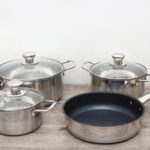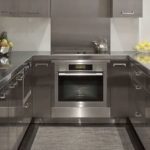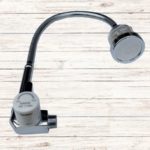Most modern luxury apartments and households have made the switch from traditional stoves to induction cooktops. This is due to the increased control induction cooktops offer over heat levels, as well as their superior safety features that help prevent fires and gas leaks.
However, a key characteristic of induction cooktops is that they rely on the principle of electromagnetic induction to function, and only cookware with ferromagnetic properties will work on them. If you’re unsure about the composition of your pots and pans, here are some tips to help you determine whether your cookware is induction-compatible:
Look for the Induction Symbol
 Induction symbol on product label
Induction symbol on product label
Typically, if a piece of cookware is induction-compatible, the base will feature a spring-like symbol or explicitly state its ferromagnetic properties on the product label. Keep an eye out for these indicators when shopping for new cookware.
Test with a Magnet
 Testing with a magnet
Testing with a magnet
Carry a small magnet with you and hold it up to the base of the cookware. If there is a strong magnetic pull, the cookware is ferromagnetic and suitable for induction cooking.
Consider the Material

Opt for cookware made from stainless steel, particularly grade 430 stainless steel (as indicated on the product label), or cast iron. These materials contain iron and are therefore ferromagnetic, making them ideal for use on induction cooktops.
A small tip when choosing induction-compatible cookware: Select pots and pans with flat bases, free from ridges, to maximize the contact area between the cookware and the cooktop.
Additionally, choose cookware with a base consisting of at least three layers and a diameter that matches your induction cooktop (typically ranging from 10 to 26 cm) to optimize heat transfer and reduce cooking times.
Important Induction Cooktop Usage Tips
 Important tips for using induction cooktops
Important tips for using induction cooktops
Maintain a minimum distance of 1 meter between your induction cooktop and other electronic devices to prevent electromagnetic interference.
Avoid touching the area around the cooktop or its sides during cooking to prevent burns.
To prevent scratches on the cooktop surface, lift and move your cookware instead of sliding it across the surface.
Do not turn off the power immediately after cooking. Wait for about an hour before turning off the power. This is because, after cooking, the cooktop activates its cooling system to gradually lower the temperature, thus prolonging the lifespan of its internal components.
We hope this article on how to identify induction-compatible cookware has empowered you with the knowledge to make informed choices when shopping for your kitchen.



































